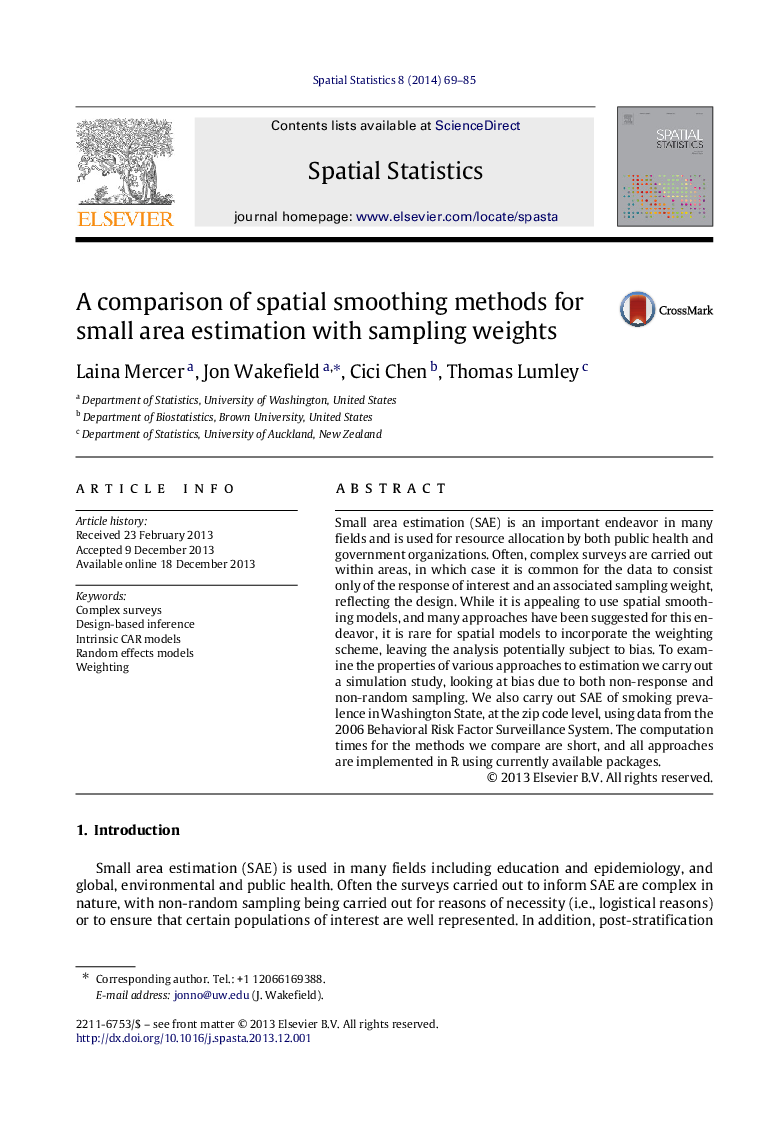| Article ID | Journal | Published Year | Pages | File Type |
|---|---|---|---|---|
| 1064558 | Spatial Statistics | 2014 | 17 Pages |
Small area estimation (SAE) is an important endeavor in many fields and is used for resource allocation by both public health and government organizations. Often, complex surveys are carried out within areas, in which case it is common for the data to consist only of the response of interest and an associated sampling weight, reflecting the design. While it is appealing to use spatial smoothing models, and many approaches have been suggested for this endeavor, it is rare for spatial models to incorporate the weighting scheme, leaving the analysis potentially subject to bias. To examine the properties of various approaches to estimation we carry out a simulation study, looking at bias due to both non-response and non-random sampling. We also carry out SAE of smoking prevalence in Washington State, at the zip code level, using data from the 2006 Behavioral Risk Factor Surveillance System. The computation times for the methods we compare are short, and all approaches are implemented in R using currently available packages.
